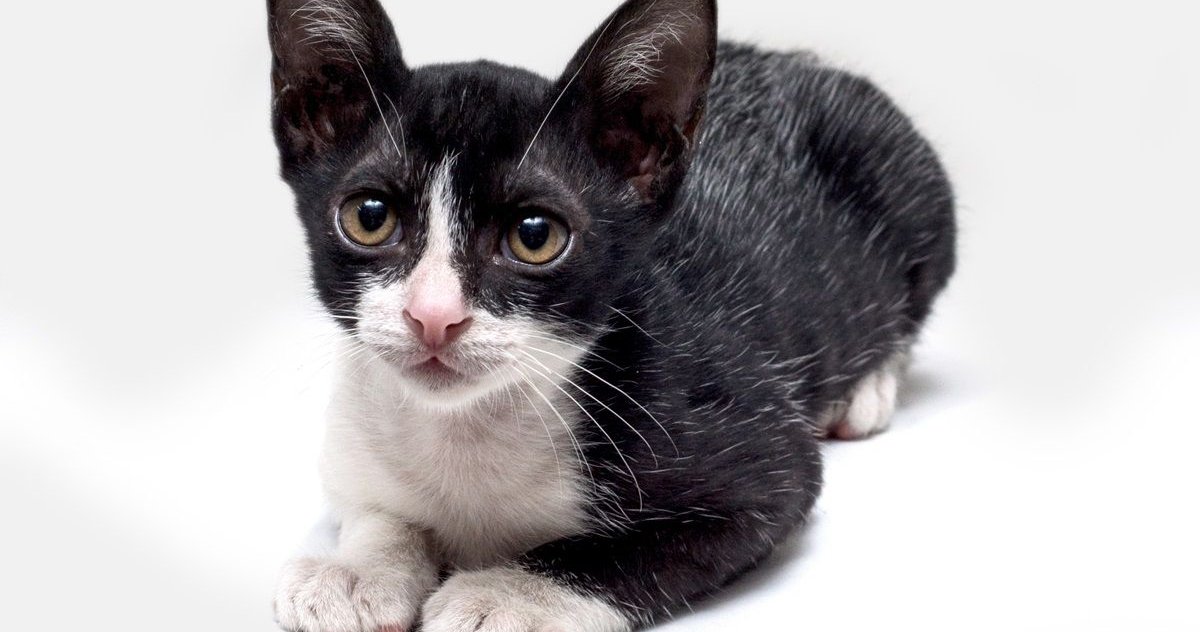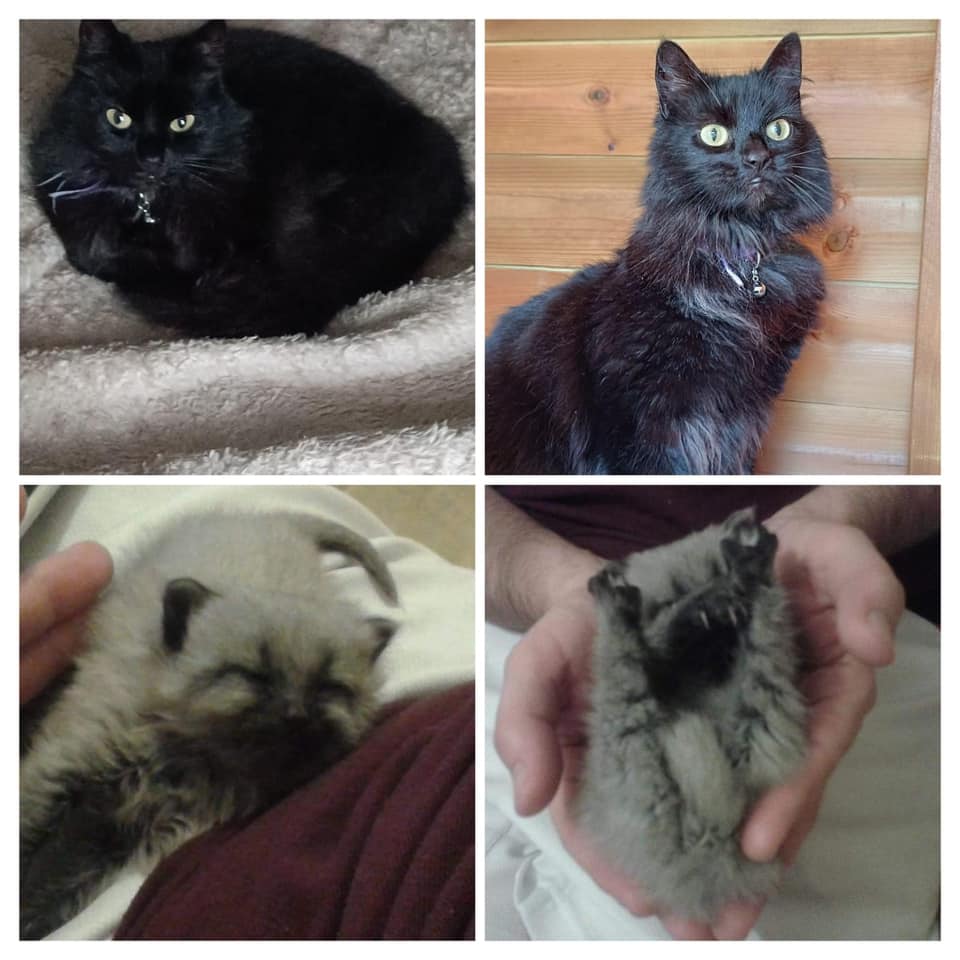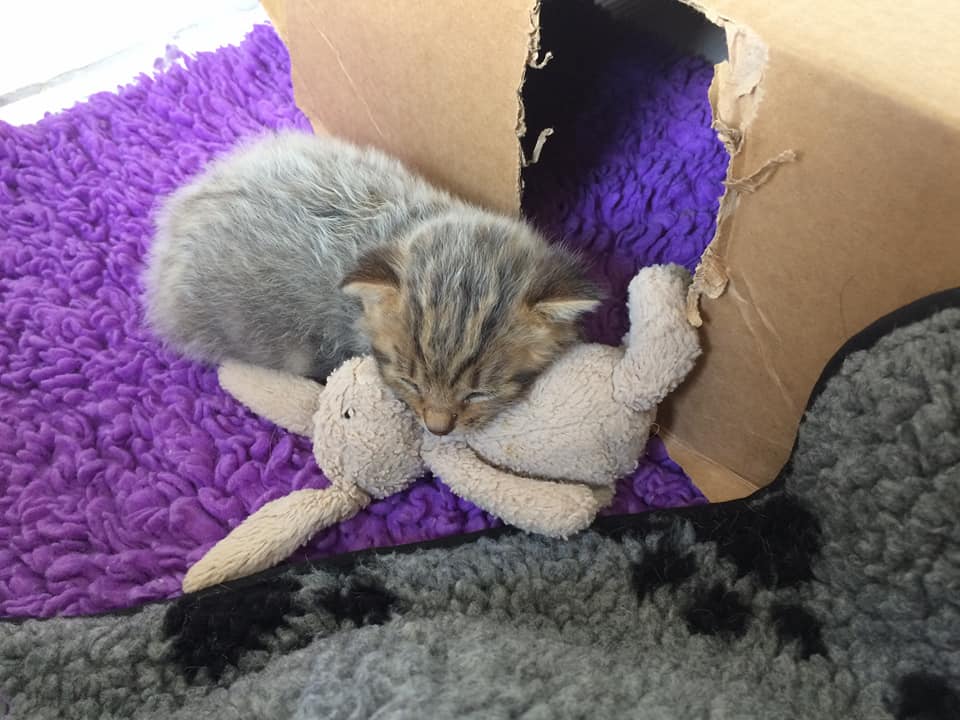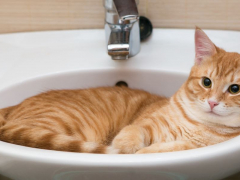
Black and white kitten with a gray silver coat that is gradually fading. Tongik / Shutterstock
Fever coat is an unusual phenomenon where kittens are born with a lighter-colored coat than expected. This is usually a distinctive silver or gray but can also be red or cream. Kittens with fever coat often have a frosted appearance, with the color lightest at the tips of the fur, fading darker toward the root.
Also called “stress coat,” it is thought to occur when the pregnant mother cat experiences a high fever or extreme stress during her pregnancy. This interferes with the development of the kitten’s fur in the womb, leading to unusual coloring when they are born.
The good news is that kittens with fever coat are usually completely healthy. They will gradually transition to their natural color by the time they are adults.
The Science of Fever Coat

This kitten was born with a cream fever coat that gradually became black. Tina Hallas
The exact cause of fever coat in kittens is not fully understood. This is because it is too rare to collect enough case studies for research, and it would be difficult (and unethical) to reproduce the circumstances that cause it. As a result, what we know about fever coats comes from the personal experience of veterinarians and cat experts.
High fever or extreme stress in the mother cat during a certain stage of pregnancy are believed to be the main culprits, interfering with pigment formation in the kitten’s coat in the womb. As a veterinarian, I have only seen fever coats in kittens born to female cats in shelter situations. These pregnant moms were generally under a lot of stress, and in poor health—meaning they were prone to fever-inducing illnesses. This experience fits with the current thinking about what might cause fever coat. However, it can affect kittens born to mothers in family homes too. Some of the causes that have been proposed include:
- Fever-inducing illness: An illness or infection (such as a viral infection) is the most common cause of a fever in a mother cat.
- Extreme stress: Stressful situations such as a change in environment, relocation, or changes in the social dynamics of the household can cause significant stress in a pregnant cat.
- Certain medications: It is possible that the side effects of certain medications given to pregnant mother cats could cause a fever coat in her kittens
Remember, if your pregnant cat falls ill, consult your veterinarian straight away to prevent any issues for her or her kittens.
Is Fever Coat in Cats a Health Concern?
A fever coat does not mean that your kitten has any health problems. Fever coat hasn’t been associated with any genetic abnormalities, health conditions (including skin and coat disease), or other negative side effects. It simply means that the pigment in their coat did not develop properly while they were in the womb. Their natural color will develop gradually once born. Kittens with fever coats are usually completely normal cats and don’t require any special care.
However, because fever coat happens as a result of an issue with the mother cat, it is recommended that she is checked for any health conditions.
Types of Fever Coat

This beautiful kitten was born with a silver fever coat over most of his body. It gradually changed to a brown tabby as he grew up. Kate Richardson
Fever coat can happen in any colored kitten and can produce an array of unusual coat patterns. These are the most common types of fever coats you’ll see:
All-Over Color
This is the most common type of fever coat. Kittens with an all-over (solid) color have a silver, cream, or red coloration that affects their whole coat. It’s usually strongest at the tips and you may be able to see their natural color at the roots. You may also spot a subtle pattern to the fever coat if they will be a tabby.
Patchy
Kittens with a patchy fever coat have patches of their normal hair and patches of their lighter-colored fever coat. This makes it easy to see what their natural color will be. For instance, a black kitten may have a normal black head with a frosted silver body and legs.
Stripes
This is the rarest type of fever coat. It results in long dorsal stripes along the kitten’s back. It’s like the stripes on the back of a tabby cat but in the distinctive light colors of a fever coat.
Like the other types of fever coat, this unique look won’t last—so if you have a temporarily striped kitten, make sure to take pictures!
Frequently Asked Questions
What is the difference between a fever coat and a smoke coat?
A smoke coat is a normal (but rare) coat effect where the tips of the coat are darker, and the roots are light. This is different from fever coat in kittens where the tips are lightest and the roots show the natural color. Unlike a smoke coat, fever coat is caused by stress or fever in the pregnant mother cat, and will fade by the time the kittens are adults.
Do kittens grow out of fever coats?
Yes! The unusual appearance of a fever coat usually disappears completely by the time kittens are fully grown. This can happen over a few weeks or as much as a year, depending on how marked the fever coat was.







